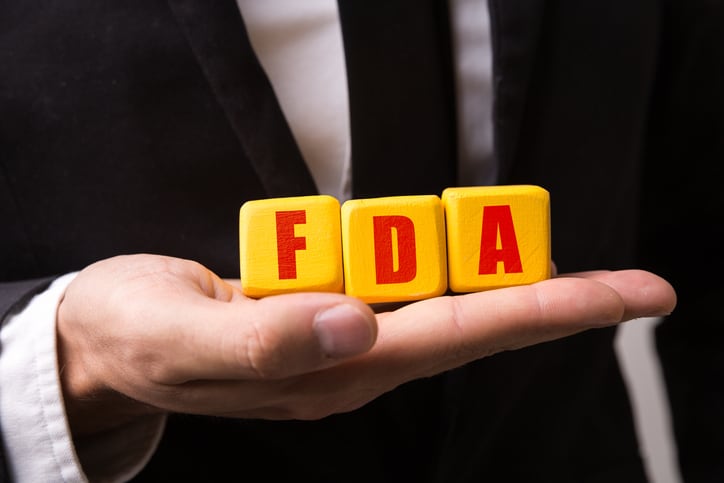The paper was published recently in the print version of the journal Critical Reviews in Food Science and Nutrition. It was written by a team of academics associated with the University of Connecticut and Harvard Law School.
The paper was published online first in April of 2020, at which time a decade had passed since a General Accountability Office report on GRAS ingredients. That report, titled FDA Should Strengthen Its Oversight of Food Ingredients Determined to be Generally Recognized as Safe (GRAS) strongly criticized the Agency’s oversight of the process.
GRAS concept created in 1958
The GRAS, or Generally Recognized As Safe, process for food ingredients was instituted in 1958. Substances that qualify under the regulation must be deemed to be reasonably certain to be safe under specific conditions for use, such as a new dietary fiber added to a breakfast cereal at a given dosage and a set number of expected servings per day, for example. And the reasoning for that determination of safety must rest upon publicly available data.
The authors noted that in the period between 1958 and the mid 1990s FDA reviewed these substances, but by that time faced a large backlog of new ingredient submissions. The process was altered by rule in 1997 to allow companies to use a self-affirmation process for GRAS declarations. Companies can still submit safety dossiers directly to FDA to get the Agency’s ruling on a new ingredient that is contended to be GRAS and some do. But many more take the self-affirmation route, in which the company is supposed to assemble a panel of experts that will rule on the reasoning behind the assertion of safety. The contents of the dossier remain with the company.
Fox guarding hen house
This creates a potential fox guarded the hen house scenario, according to the authors. Officials at FDA do not know the details of what’s in those dossiers, so there’s no way to determine the quality of those self affirmation processes. Here say has it that some of these self-affirmations have been rudimentary at best.
The authors contend that not only does the Agency not know which self affirmation dossiers are up to snuff and which aren’t, it doesn’t have picture really of what’s on the market in the first place.
“It is impossible for FDA to know the number of chemicals in use throughout the US food supply because the agency is unaware of the GRAS substances being self-determined by companies. Companies are incentivized to self-determine GRAS status in almost all cases because it is faster and easier than the food additive approval process,” the authors wrote.
GAO action items
The authors noted the GAO report contained several specific action items. The GAO report directed FDA to:
- Develop a strategy to require companies to provide FDA with basic information about GRAS substances, e.g., identity and intended uses, which would be publicly accessible
- Develop a strategy to minimize the potential for conflicts of interest in companies’ GRAS determinations
- Develop a strategy to monitor the appropriateness of companies’ GRAS determinations through random audits or some other means, including issuing guidance on how to document GRAS determinations
- Develop a strategy to finalize the rule that governs the voluntary notification program
- Develop a strategy to conduct reconsiderations of the safety of GRAS substances in a more systematic manner
- Develop a strategy to help ensure the safety of engineered nano materials that companies market as GRAS substances without the agency’s knowledge.
The authors noted that GAO has found that action items Nos. 3, 4 and 6 have been addressed. A draft guidance, still not finalized, has been issued to address item No. 2. But the authors said FDA has not made public any progress on item No. 1 nor on No. 5.
“These remain extremely important considerations because they affect the FDA’s ability to identify substances in the food supply and assess their safety, which are both necessary to ensure the safety of the U.S. food supply,” the authors wrote.
Authors: FDA needs to create master list
The authors contend that in their view existing law gives the Agency ample authority to at the very least require a notification from companies of new ingredients coming onto the market via the self affirmation process.
“A master list is a minimal essential goal for FDA to ensure that it meets its responsibility for ensuring a safe food supply. The FDA cannot regulate what it does not know to exist. Despite the agency’s hesitation, the Food Additive Amendment appears to provide FDA with ample authority to require agency notification for chemical substances that are self-determined as GRAS by manufacturers,” they concluded.
Attorney disagrees that present system raises safety concern
Ashish Talati, a partner in the law firm Amin Talati Wasserman, said in his view the present system is working well, despite the warning flags raised by the paper’s authors. If there were a huge issue, several decades of market history ought have been enough to bring it to light, he said.
“In general, I think the program is working rather well,” Talati told NutraIngredients-USA. “We don’t see the dead bodies piling up out there.”
“Sure, you hear the stories of the 8-page GRAS dossiers, but I don’t think there are too many of those. FDA has all the tools it needs if there was really a safety concern. It’s not as if the Agency wouldn’t do something; they would,” he said.
“And, we live in a democracy, OK? If you don’t like the way things are, there’s a way to change that,” Talati added.
Using GRAS to satisfy New Dietary Ingredient requirements
One concern in the supplement industry that was not a focus of the paper’s authors is the way in which a self affirmation GRAS dossier can form a legal basis for bringing a new supplement ingredient to market without having to file a New Dietary Ingredient Notification. By law a new dietary ingredient needs to have an NDI dossier on file, unless it is already GRAS. Some have gone so far as to characterize the practice as making use of a loophole.
Robert Durkin, of counsel with the firm AGG, said part of the issue is that certain personnel at the Agency have arbitrarily raised the bar for the scientific backing needed for a successful NDI. He said he worked to restrain the practice during his career at FDA. The end result has been that industry now sees the GRAS process as more straightforward and ‘reasonable,’ while the NDI route is fraught with uncertainty and difficulty. And, of course, the self affirmation route is the most straightforward of all.
“If you are going to do a self affirmed GRAS and FDA is never going to call you on it, why wouldn’t you go that route? If they would enforce GRAS they way they should and would review NDINs appropriately rather than use a food additive standard then I think the NDI failure rate would go down and self affirmed GRAS would become less attractive,” he said.
What does ‘in the food supply’ mean?
One quirk of the GRAS loophole is that the new ingredient is supposed to have been ‘in the food supply as an article used for food.’ So, in other words, a firm might have a new ingredient that consists of a polyphenol extracted from a tea leaf, but tea itself has been consumed for a long time. For a company that might be using this route to get a truly novel dietary ingredient onto the market, though, what does that mean? Would a pilot run of a few thousand nutrition bars containing the new ingredient and given out to employees and their families satisfy that standard? It’s an open question, Durkin said.
“It is a fundamental question about DSHEA that remains unanswered even now, more than 25 years later. What’s required to be considered to be ‘in the food supply?’” Durkin said.
The true Wild West
Marc Ullman, an attorney of counsel with the firm Rivkin Radler, said the irony is that the issues with GRAS, which don’t get much attention from the kind of critics who attack supplements, turns on its head the notion that it is the dietary supplement industry that is the Wild West.
“Some people say the supplement industry is unregulated. But where there is a real issue with lack of control over what’s being offered to consumers is on the food side because of the self affirmed GRAS process,” he said.
Source: Critical Reviews in Food Science and Nutrition
https://doi.org/10.1080/10408398.2020.1756217
Ten years post-GAO assessment, FDA remains uninformed of potentially harmful GRAS substances in foods
Authors: Faustman C, et al.




